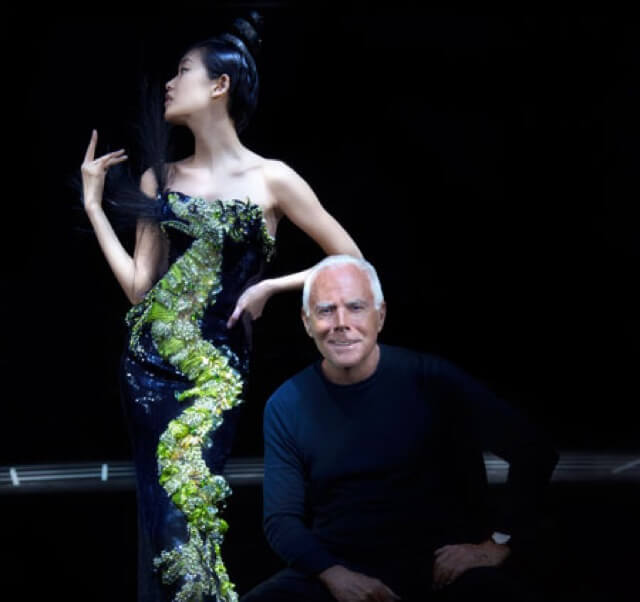Culture is the very embodiment of a brand’s values, ethics and purpose. This instalment of our Let’s Talk About series dissects brand culture, the third pillar of the brand experience sweet spot.
But what about purpose? A clear definition of purpose helps consumers align themselves with like-minded people, brands and organisations.
How does a brand capture this spirit in a meaningful way? How can a brand harness the power of purpose and shape an impactful delivery of experience?
Culture, the last of our three pillars (Product, Service and Culture) that form the ‘sweet spot’ of perfect delivery of brand experience, can be separated into three main areas of delivery:
- Purpose
- Localisation
- Giving back

(Graphic: Ales Kernjak)
It’s just a mission statement, right? It’s so much more than that. Brands have always relied on a mission statement. Today, it’s no longer just a byline, but front and centre in brand delivery. Mission has become Mission, Vision, Purpose; what a brand wants to deliver, the stamp a brand aims to leave behind as well as its ethical footprint.
Consumers now actively seek out brands that define their purpose and hold them accountable to it. They demand that brands give back in ever further reaching ways. Socially, politically and environmentally.
How does Purpose Define Brand Experience?
Tone of voice is critical for the effective delivery of service. But what steps do brands need to follow to build a credible and authentic cultural shift?
Training with heart
Internal training, staff ambassadorship, ethical sourcing of products. Stepping over the barrier between consumer and brand to deliver something that’s needed by society at large but has seemingly no commercial benefit to the firm. These are all effective ways brands can ensure every area of brand experience fulfills the purpose outlined in a mission statement.

(Source: TOMS)
Delivery with Soul
TOMS and Warby Parker are examples of brands that step beyond internal training and demonstrate an entire brand outlook based on their ethical standpoint. Purpose is intrinsically wrapped around their origin products.
TOMS was founded by Blake Mycoskie who’s also behind the idea of One for One™ – a business model that helps a person in need with every product purchased. The simple idea has grown into a global movement: TOMS Shoes has provided over 86 million pairs of shoes to children since 2006 and TOMS Eyewear has restored sight to over 600,000 since 2011.
Similarly, Warby Parker works with nonprofits such as Vision Spring to donate one pair of glasses for each pair sold, improving access to glasses worldwide. They’ve already reached one million people in need.
Both brands speak about their reason to exist and their products reflect their purpose. Purpose doesn’t only equate to a clear statement of intent, but is followed up with concrete actions. This radiation of intent attracts consumers as much as it does talent. Candidates seek out brands that reflect their purpose, ethos and values. This crosses a boundary no training can recreate.

(Source: mummy/why)
Localisation
Brands speaking and thinking like consumers – this, of course, does not mean the same thing to all people in all places. Differences in translation exist culturally, visually and in the way feeling is conveyed.
An example of a brand harnessing the power of ‘Glocal’ (global, local) activation is Armani Group. When they cast actress Shu Qi in ads shared only across Greater China, Singapore and Malaysia, they set a standard for brands speaking clearly to a local audience with imagery that connects to them, while maintaining a singular global creative vision.
Some brands do this more successfully than others. PUMA had a clunky campaign back in 2011 with their ads for a new running shoe with the tagline ‘mile eater’. A fantastic and easy to understand line in North America, however outside of this market where much of the world uses Kilometers to measure distance, the translations didn’t make sense to the consumer.
Brands with local marketing teams can shine by taking local knowledge and filtering it back to change, enhance and influence campaign messaging.

(Source: WWD)
Giving Back
Purpose defines cultural authenticity and connects with consumers. But how do brands show that they believe in the same things as their consumers? Brands have crept ever more convincingly into the charitable sphere, using profits to show they care.
Moving beyond simply sponsoring art gallery events and throwing ‘private’ dinners to raise money, brands are now using their power to create real change. On a grassroots level, with initiatives a long way from the glamour of an Upper East Side New York dinner party, brands are out to deliver everything from shoes in the Amazon to freshwater wells in Africa.
As early adopters, Timberland demonstrated this by offering employees paid time to serve in the community program Serv-a-palooza. This gave employees up to 40 paid hours each year to volunteer in ways that speak to their own passions.
At the luxury end, Gucci’s ‘Chime for Change’ connects 300 young advocates from 121 countries. Their platform provides the right people and resources to amplify voices and explore solutions to advance gender equality. Most notably the programme launched with a global series of concerts publicly backed by Beyoncé.
By giving back, brands are using their platform, following and advertising budget to back charitable initiatives. They’re changing viewpoints and help to educate, which deepens the relationship between consumer and brand.
So Culture is Connective?
Exactly. Brand culture is connective and brands have learned that in order to round out and burnish the authenticity of their message, they must act with cultural responsibility and define their purpose. This shapes everything from product sourcing through to the way teams talk with consumers. Brands must act with the same level of desire and passion to shape the world as their consumers do.
Today’s consumer has learned the power of their voice in creating collective action – the butterfly effect – that generates movements. Consumers have realised their spending power, and withholding spend has shocked brands into action.
Brands deliver a perfect brand experience by creating a brand culture that radiates out into the world around them. It’s here that the brand ‘sweet spot’ comes to completion. Product and service, unified by culture.
About the Author:
With an ever-desirable passion for creativity and ability to deliver results, Ales Kernjak has enabled consumer engagement for some of the world’s biggest brands, including Aesop, PUMA and Timberland. Ales engages in retail concept development, design and roll-out, visual merchandising, visual marketing, staff training and retail operational guidance. Learn more about what he is up to in LinkedIn.


